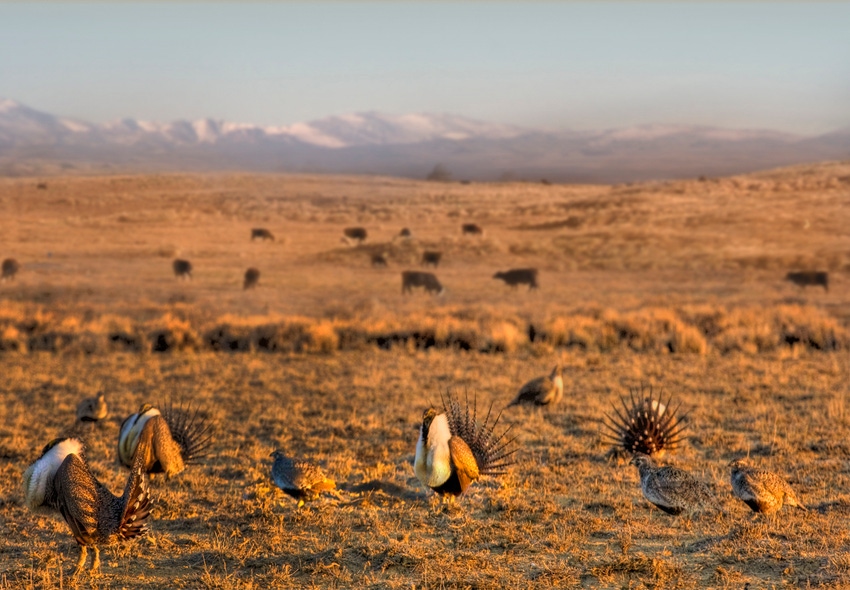Farmer said litigation frenzy to protect habitats from BLM’s rollback could be worst-case scenario.

Westerners want to maintain their original 2015 working sage grouse plans for their communities and their future. However, the Trump Administration has taken steps that are putting that in jeopardy.
State governments and the federal government play complementary roles in managing the greater sage grouse. States manage wildlife species, while federal agencies like the Bureau of Land Management (BLM) manage habitat on the public lands they steward. These shared responsibilities mean that it makes sense for state and federal plans to align in pursuing the common goal of healthy sagebrush-steppe habitat that benefits wildlife and recreation while supporting local economies.
The greater sage grouse management plans BLM adopted in 2015 were critical in helping the U.S. Fish & Wildlife Service conclude that the greater sage grouse does not warrant protection under the Endangered Species Act.
BLM recently published draft environmental impact statements with public comment periods ending on Aug. 2.
An estimated 76% of BLM’s upcoming and newly offered oil and gas leasing on public lands occurs inside protected habitat across Colorado, Nevada, Utah and Wyoming, according to new mapping. The 2015 sage grouse plans incorporate varying level of protections for all sage grouse habitat and tell BLM to prioritize leasing outside of habitat.
The Wilderness Society’s plan said according to the new mapping, nearly all -- 99.9% -- of the 1.3 million acres being offered for oil and gas leases in upcoming sales in Wyoming intersect with sage grouse habitat on public lands in the state.
The plans, which have been under the scrutiny of several oil industry-friendly legislatures, were drafted by the hands of thousands of westerners -- including industry, hunters, farmers and conservationists -- who all came together to make plans that work for their communities, keep the sage grouse off of the Endangered Species Act and keep westerners working.
Pat O’Toole, owner and operator of Ladder Livestock Co. and president of Family Farm Alliance, farms in Colorado near the Wyoming border and has seen firsthand the positive effect cooperation in the region has had on preserving sage grouse habitat. The process to keep the sage grouse off the Endangered Species Act listing has brought multilevel commitment, which has created positive results in building numbers of sage grouse in a short period of time.
O’Toole has been involved with the Western Governors meetings on endangered species and saw the buy-in from different groups of people. He said the process has proved that the best way to accomplish many of the goals of saving species is through collaborative efforts rather than litigation or restrictions.
Nada Culver, senior counsel and director of the BLM Action Center at The Wilderness Society, said if BLM and the U.S. Department of the Interior decide to move forward in removing the core protections that a “mountain of science” confirms are working, environmental groups may find themselves wanting to list the species under the Endangered Species Act and use litigation to force protections.
O’Toole said many endangered species listings and restrictions come at the expense of the agriculture industry. “What I see in this process is a multilevel commitment to work together. That process is more preferred than the litigation process. It offers a way to build up trust in each other and the process used in trying to figure out what kind of West we’re going to end up with.”
O’Toole said forcing the sage grouse into a “litigation frenzy is a worst-case scenario.” He added, “With such a great experiencing working together, I don’t think you want to give that up.”
About the Author(s)
You May Also Like



.png?width=300&auto=webp&quality=80&disable=upscale)

